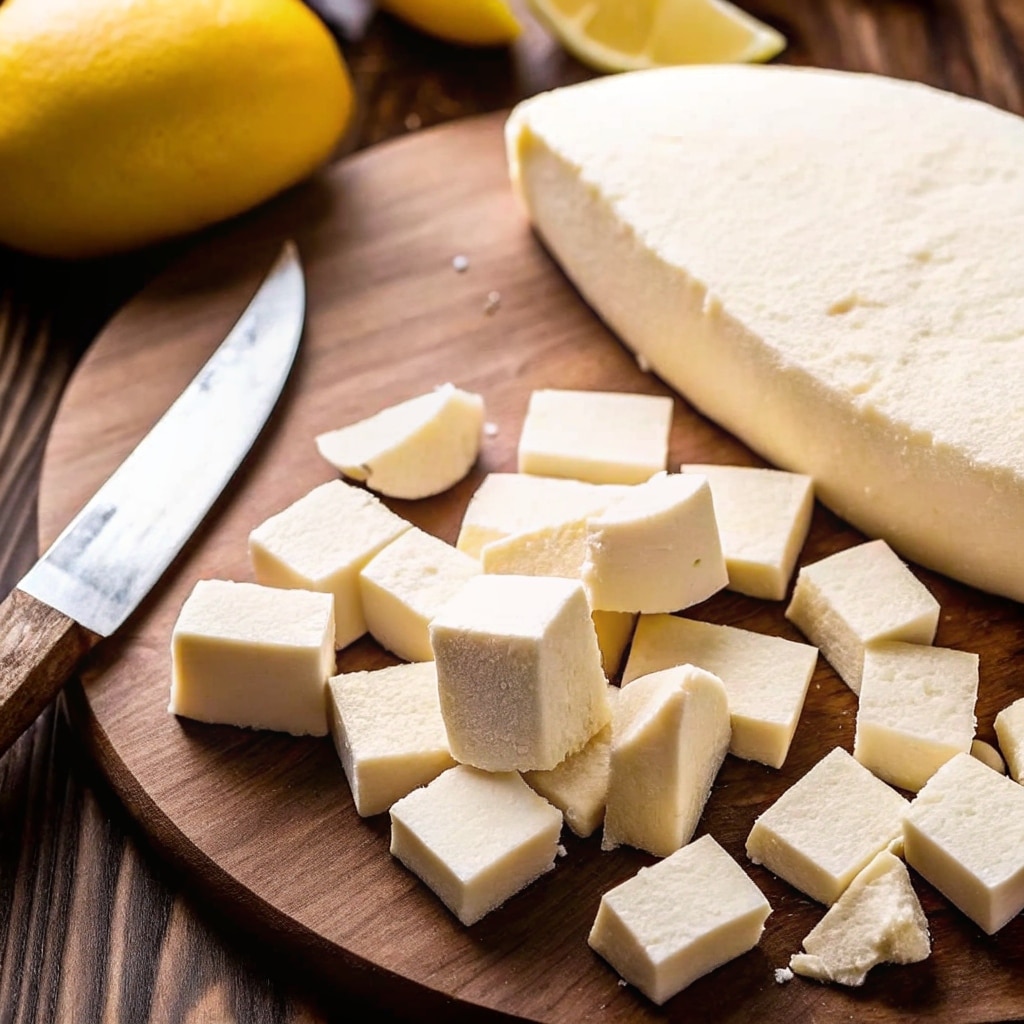Welcome to a flavorful journey where india cottage cheese takes center stage. In this guide, you’ll explore its rich origins, distinct characteristics, health perks, and clever ways to use it in everyday meals. By the end, you’ll understand why this versatile cheese deserves a permanent spot in your kitchen—along with some delicious recipe inspiration.
The Story & Introduction to India Cottage Cheese
Have you ever walked into a warm kitchen, greeted by the comforting aroma of spices and something creamy bubbling away? That’s the magic I experienced when I first tasted india cottage cheese—freshly made paneer—at my grandmother’s home. I vividly remember her pressing curds by hand, shaping them into smooth squares that felt like edible hugs. Every bite was soft, milky, and full of that homemade, heartfelt flavor.

Homemade Paneer (Indian Cottage Cheese)
Ingredients
Method
- Bring milk to a boil while stirring.
- Turn off heat and add lemon juice gradually.
- Stir until curds separate from whey.
- Pour into cheesecloth to drain whey.
- Rinse under cold water.
- Wrap and press under weight for 30–60 minutes.
- Cut into cubes and store refrigerated.
Notes
Childhood Memories of Paneer
Growing up in a bustling household, the kitchen was our heart. My earliest memories involve my grandmother coaxing flavors out of simple ingredients. She’d crumble warm paneer into a fragrant curry, stirring in green peas and garam masala, and call us for dinner. That first aroma—rich with cumin and butter—was unforgettable. It wasn’t just food; it was love on a plate, and india cottage cheese had a starring role.
What Makes India Cottage Cheese Unique
Unlike Western cottage cheese—with its loose, creamy curds—india cottage cheese (paneer) is an acid-set, pressed cheese made by curdling hot milk with lemon juice or vinegar. Once pressed, it forms firm, sliceable blocks ideal for grilling, frying, or stewing. This texture difference means paneer holds its shape beautifully in dishes like palak paneer or paneer tikka, making it a true culinary chameleon.
Understanding What Indian Cottage Cheese Is
What Is Indian Cottage Cheese Called?
In India, cottage cheese goes by its more familiar local name: paneer. This name comes from the Persian word “panir,” meaning cheese, which reflects centuries of culinary exchange. In different regions, you’ll hear variations like chhena in Eastern India, where it’s softer and more crumbly, often used in sweets like rasgulla and sandesh. But when people talk about india cottage cheese in a savory sense, they’re almost always referring to paneer.
Unlike some European cheeses, paneer doesn’t require rennet, making it fully vegetarian. It’s created simply by heating milk, adding an acidic agent like lemon juice or vinegar, and straining the curds. The resulting cheese is then pressed into firm blocks, perfect for cubing, slicing, or grating. This straightforward process has made paneer a household staple across the subcontinent for generations.
You can find more on the different uses of chhena in our Crumb Recipes Facebook Page, where classics like rasmalai shine with this delicate variety.
Is Cottage Cheese Available in India?
Yes, both Indian paneer and Western-style cottage cheese are available in India, though they serve different purposes in the kitchen. Paneer remains the dominant form of india cottage cheese for cooking, easily found in local dairies, supermarkets, and even made fresh at home.
However, Western cottage cheese—characterized by loose curds and a slightly sour taste—has gained popularity in urban markets. Health-conscious consumers buy it for its low-fat, high-protein profile, often enjoying it plain or with fruit as a light meal. Brands like Amul, Britannia, and Nestlé have also introduced packaged versions to cater to the growing demand for Western-style dairy products.
If you’re curious about how different dairy products compare, visit our complete Indian dairy guide for a side-by-side breakdown of cheese varieties.
Paneer vs Cottage Cheese: Key Differences
Are Paneer and Cottage Cheese the Same?
Though they share some similarities, paneer and Western cottage cheese are quite different in both structure and use. Both begin with curdled milk, but the processes—and end results—diverge quickly.
Paneer, often referred to as india cottage cheese, involves curdling hot milk with an acidic agent and pressing the curds into a firm, dense block. No aging, fermentation, or rennet is involved. This pressed texture allows paneer to hold its shape beautifully in hot dishes, making it a staple in recipes like paneer tikka masala or matar paneer.
Cottage cheese, on the other hand, remains loose, creamy, and slightly tangy. It’s made by curdling milk, draining the whey, and lightly dressing the curds, sometimes adding cream or salt. The result is a soft cheese with small curds that you typically eat fresh or add to salads and smoothies.
From a nutritional perspective, both types of cheese are rich in protein, but paneer tends to be higher in fat due to its full-fat milk base. Western cottage cheese often comes in low-fat or fat-free versions, making it a popular choice for calorie-conscious eaters. For a detailed nutrition comparison, check our Indian cheese nutrition chart.
How They Differ in Use & Flavor
The primary distinction lies in cooking versatility. Paneer’s firm texture allows it to be grilled, fried, sautéed, or simmered in rich sauces without breaking apart. It’s a star in traditional Indian curries like butter paneer and shahi paneer, absorbing flavors while maintaining its shape. You’ll find many of these recipes in our traditional Indian curry collection.
Western cottage cheese, by contrast, is rarely cooked. Instead, it’s enjoyed chilled, often topped with fruit or honey, and shines in no-cook dishes. Its mild, slightly sour taste makes it a refreshing addition to breakfast bowls, dips, and light snacks.
Understanding these key differences helps home cooks choose the right cheese depending on the dish. While both are delicious, india cottage cheese (paneer) stands out for its unmatched versatility in warm, richly spiced recipes.
Health Benefits of India Cottage Cheese
Is Indian Cottage Cheese Healthy?
Absolutely. India cottage cheese (paneer) offers a wide range of nutritional benefits, making it a frequent choice for balanced diets across the country. Made from whole milk, paneer is packed with high-quality protein, essential for muscle repair and growth. Every 100 grams typically delivers around 18 grams of protein, making it especially valuable for vegetarians who rely on dairy for their protein intake.
Beyond protein, paneer is rich in calcium, which supports strong bones and teeth. It also provides essential nutrients like magnesium, phosphorus, vitamin B12, and folate—key for nerve function, cell growth, and metabolism. One major advantage of paneer is its low lactose content, making it easier to digest for many people who are mildly lactose-intolerant.
Because paneer is unaged and free of additives, it’s a natural, whole-food option. If you want more healthy dairy ideas, visit our healthy Indian dairy recipes for creative meal inspiration.
Benefits for Weight, Bones & Blood Sugar
Paneer’s nutritional profile supports various health goals. Its high protein content promotes satiety, helping you feel fuller longer, which can assist in weight management. The presence of conjugated linoleic acid (CLA), found in full-fat dairy, may even aid fat metabolism when consumed as part of a balanced diet.
Calcium and phosphorus work together to strengthen bone density, while magnesium contributes to better blood sugar control by improving insulin sensitivity. This makes india cottage cheese a smart choice for individuals managing diabetes or metabolic disorders. Moreover, the absence of sodium (unless added during preparation) makes it heart-friendly compared to many aged cheeses.
For a deeper dive into how paneer supports these aspects of health, don’t miss our nutrition and wellness guide for Indian vegetarians.
What is Indian cottage cheese called?
Indian cottage cheese is called paneer. In some regions, especially in Eastern India, it’s also known as chhena. Unlike Western cottage cheese, paneer is firm, pressed, and holds its shape well when cooked. Its neutral flavor makes it ideal for absorbing the rich spices typical of Indian cuisine.
Is cottage cheese available in India?
Yes, both Western-style cottage cheese and traditional india cottage cheese (paneer) are widely available in India. Paneer dominates the local market and is easily found in dairies, supermarkets, and street stalls. Western cottage cheese is more common in urban health stores and select supermarket chains.
Are paneer and cottage cheese the same?
While similar in origin, paneer and Western cottage cheese differ in texture and use. Paneer is firm, pressed, and often cooked in hot dishes without melting. Cottage cheese is loose, creamy, and typically consumed raw. Both offer high protein, but paneer tends to be richer in fat due to its full-fat milk base.
Is Indian cottage cheese healthy?
Yes, india cottage cheese (paneer) is highly nutritious. It’s packed with protein, calcium, and several essential vitamins and minerals. Its high protein content supports muscle growth, while its calcium strengthens bones. The low lactose content also makes it suitable for many lactose-sensitive individuals.
Conclusion
From my grandmother’s cozy kitchen to today’s health-conscious meals, india cottage cheese—better known as paneer—remains a beloved, versatile ingredient across generations. Its mild flavor, firm texture, and impressive nutrition profile make it a standout choice for everything from rich curries to refreshing salads.
Whether you’re trying your hand at homemade paneer or exploring new recipes like our palak paneer or paneer tikka masala, this humble cheese invites creativity in every bite. And if you’re eager to compare it with other dairy staples, don’t miss our ultimate dairy comparison guide to see how paneer stacks up nutritionally.
So the next time you’re browsing the dairy aisle or planning your weekly menu, remember that india cottage cheese offers not only comforting flavors but also meaningful health benefits. One simple ingredient, endless delicious possibilities.

